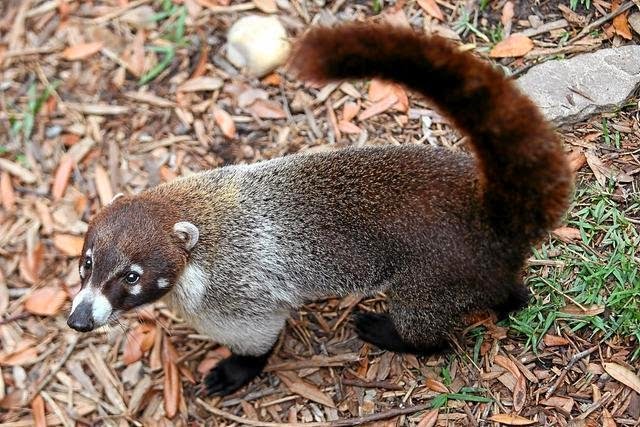Red drum, also called redfish, channel bass, spottail, red bass or reds, are one of Florida’s most popular sport fish and the state’s most widespread estuarine fish. Red drum are named after the "drumming" sound the make during spawning and when taken out of the water. The sound is produced by muscles rubbing against the inflated air bladder. Red drum inhabit the nearshore and offshore waters throughout the Gulf of Mexico and along the Atlantic coast from Massachusetts to Key West. Juvenile red drum inhabit rivers, bays, canals, tidal creeks, and passes in estuaries for up to four years, after which they usually move to nearshore or open ocean waters as adults. Red drum in Florida can reach lengths of 45 inches and weigh up to 51 pounds. The world record red drum was caught off North Carolina waters in 1984 and it weighed 94 pounds, 2 ounces.The oldest recorded red drum in Florida was aged at 40 years.
Wednesday, November 26, 2014
The Aardwolf
The Aardwolf is a species of small insectivores related to hyenas. The Aardwolf lives in africa and preys mainly on termites. There only predators besides humans are black backed jackals, owls, leopards, and other hyenas. They are not an endangered species even though ranchers shoot them cause they think they will kill livestock.
Monday, November 24, 2014
Greater Bird-of-Paradise
The majestic Greater Bird-of-Paradise, or Paradisaea apoda is native to New Guinea and Aru Islands, Indonesia. These birds eat mainly nuts, seeds, and small insects. They are labeled "Least Concern" in the IUCN Red List of Threatened Species, hunted for their plumage, but not endangered yet. Carolus Linnaeus invented the scientific name for this bird, Paradisaea apoda. The name, meaning legless bird-of-paradise was invented because of a misconception that the birds could fly for long periods of time and would never touch the ground until their moment of death.
Sunday, November 23, 2014
The Roloway Monkey
The Roloway monkey, or Cercopithecus roloway, is an endangered species found in the jungles of West Africa. This guenon (Old World monkey) is distinguishable by its long beard. Roloway monkeys live in the canopies of jungles and rainforests in Ghana, Sierra Leone, Guinea, and Liberia among other West African areas. The Roloway monkey is an omnivore, and eats a diverse selection of insects, fruits, seeds, and flowers. This monkey is endangered because of hawk-eagles, chimpanzees, leopards, and, most of all, humans. Africans kill the Roloway monkey for their bushmeat, a delicacy in West African cultures. The monkeys also breed less often because groups of males will stray off from their group, and the females will stay behind. The Roloway monkey is diurnal, and will spend its days hunting and sometimes playing in the lush African rainforests and jungles.

White-Nosed Coatimundi
The white-nosed coatimundi, or Nasua narica, is a raccoon-like mammal. The coatimundi, more commonly called the coati, lives in central America and the deserts of the southwestern states of America. It is a social animal and travels in groups of up to 24. The Coati can grow up to five feet long and can weigh up to 25 pounds. Coatis are diurnal and spend their days searching for insects, lizards, roots, fruits, and nuts to eat.
Subscribe to:
Comments (Atom)


